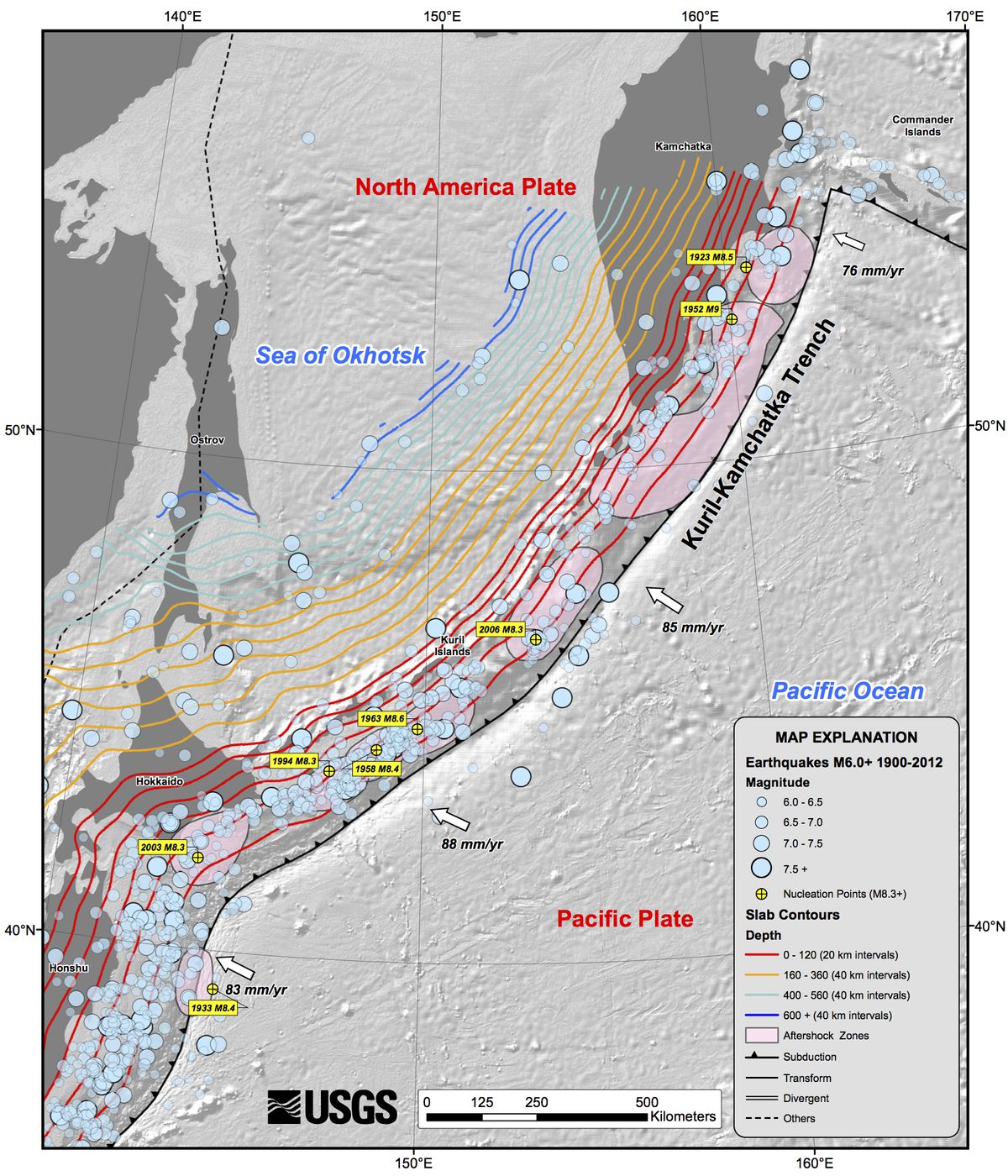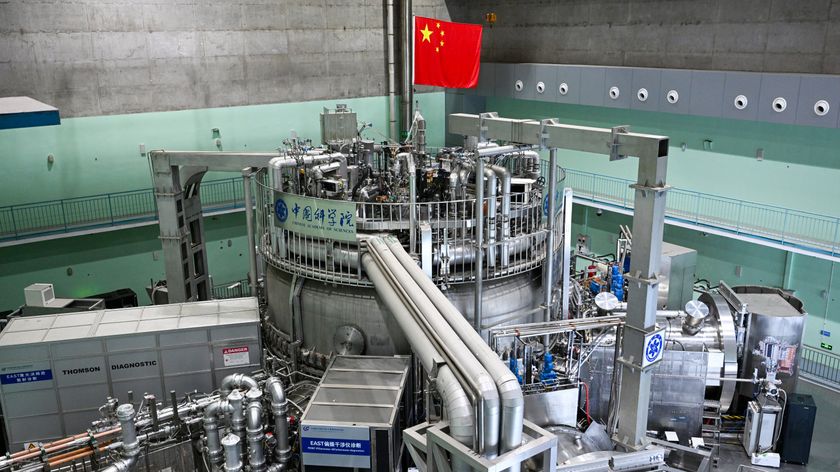Deepest Earthquakes May Be Best at Dissipating Energy

An investigation of the most powerful earthquake ever recorded deep within the Earth suggests deep quakes may be better at dissipating pent-up energy than similar quakes near the surface, researchers say in a new study.
Scientists investigated a magnitude-8.3 earthquake that struck beneath the Sea of Okhotsk, between Russia's Kamchatka Peninsula and Japan, on May 24. The Sea of Okhotsk rests above a subduction zone, a place where one of the Earth's tectonic plates slides beneath another. Here, the Pacific Plate dives or subducts beneath the North American Plate.
The earthquake ruptured about 380 miles (610 kilometers) below the seafloor, far below the Earth's crust. The quake previously listed as the most powerful deep quake, a magnitude-8.2 temblor, took place in 1994 about 390 miles (631 km) deep. [The 10 Biggest Earthquakes in History]
After investigating seismic waves observed during the earthquake in the Sea of Okhotsk, the researchers found the initial quake triggered four other powerful shocks, one of magnitude 7.8, one of magnitude 8.0 and two of magnitude 7.9. The scientists calculated that the pressure front from the initial earthquake sped outward at about 9,000 mph (14,400 kph), which set off three of the four shocks in a line south of the initial quake. One of these three shocks released a pressure front northward, triggering a fourth shock.
All in all, the entire sequence of earthquakes happened in just 30 seconds, with most of the energy released by the four major shocks. In contrast, similar earthquake swarms that occur near the surface can take hours or days to finish, and would likely include a large number of small aftershocks. This suggests deep earthquakes are likely more efficient in dissipating stress than are shallow ones, the investigators said.
The researchers added that this deep quake may have been good at releasing energy quickly because it ruptured within a very old rock. The northwest Pacific crust that is subducting in this area is some of the oldest, coldest oceanic crust subducting on Earth. Its age means it is brittle, enriched with concentrations of stress that enlarge the rupture zone and can easily be triggered, greatly shortening the delay between aftershocks.
Some theoretical research suggested that at the pressures and temperatures found in the depths where this quake happened, ruptures could only occur within zones about 6 miles (10 km) thick, said study lead author Shengji Wei, a seismologist at the California Institute of Technology in Pasadena.
Sign up for the Live Science daily newsletter now
Get the world’s most fascinating discoveries delivered straight to your inbox.
However, these new findings revealed that the rupture occurred in a zone at least 24 miles (40 km) thick. This suggests the subducting rock kept relatively cold and brittleand thus full of concentrations of stress, even though subduction began about 100 million years ago.
"This finding challenges the previous theory explaining deep earthquakes, and brings in new thoughts on the thermal and dynamic evolution of the subducting slab," Wei told LiveScience's OurAmazingPlanet.
Wei and his colleagues Don Helmberger, Zhongwen Zhan and Robert Graves detailed their findings in the Oct. 16 issue of the journal Geophysical Research Letters.
Follow us @livescience, Facebook & Google+. Original article on LiveScience.












